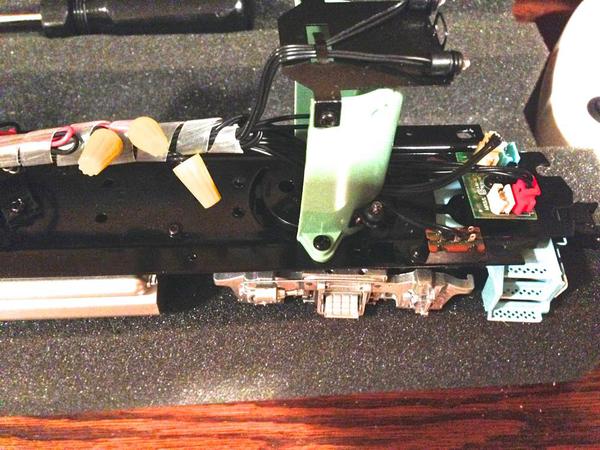Today, for the first time, I placed a recently acquired Atlas Maersk GP-60 on my layout. Tested it out, once around the loop, everything fine. Thinking that my MTH Premier Maersk GP-60 dummy would look cool behind it, I placed it right behind the Atlas. As soon as I powered up the track (this is with an MRC Pure Power Dual transformer) the ammeter shot to the max (I think the voltage had barely ticked past 5) and the circuit tripped. Tried resetting it, running the same way, got the same result. I removed the MTH Maersk dummy, and the Atlas runs fine. Could the lighting on the dummy be that intense that THAT would be the problem? Or is there something more complicated involving Atlas vs. MTH electronics? If I wanted to do this again, would I have to remove the bulbs in the MTH dummy and replace them with lower voltage bulbs, or maybe LEDs?
Just for the record, I have the Lionel Maersk SD-70, and I'm pretty sure I've run it with the MTH Maesrk dummy without a problem.
- Mike



















